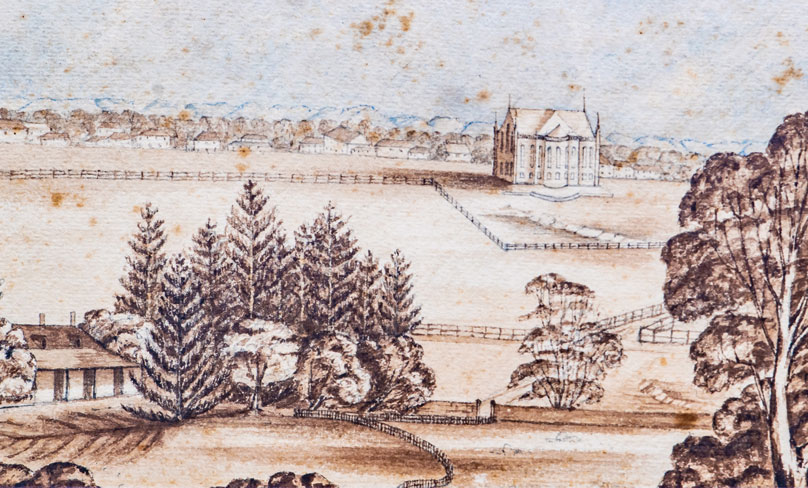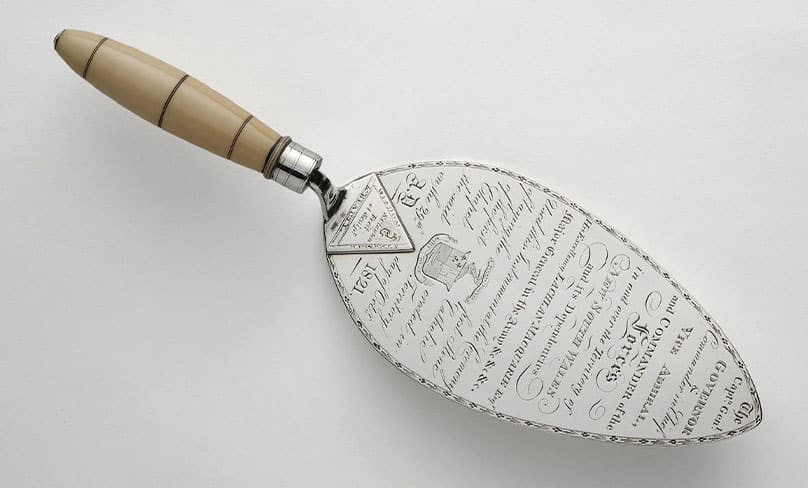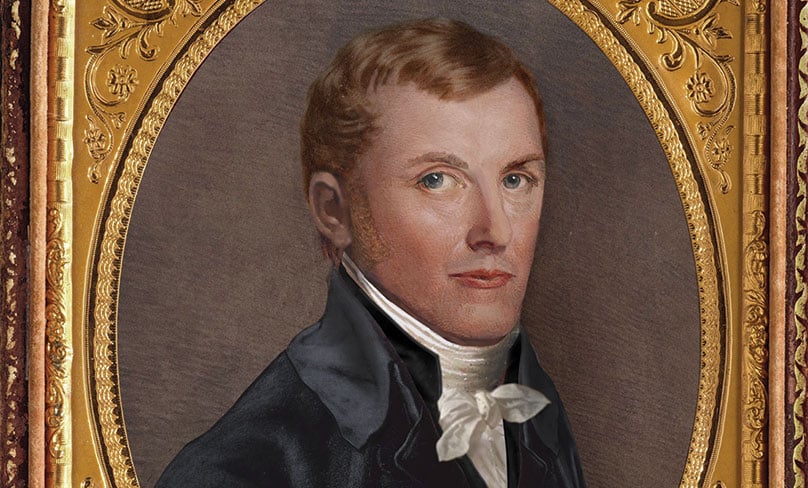
Sydney:
For the Catholics of New South Wales it was a red letter day. It was also a notable event for the wider population. None less than the Governor himself, no natural friend to the Catholic Church, had consented to lay the foundation stone.
On Monday 29 October, 1821 the foundation stone was laid for the first Catholic Church in the Colony of New South Wales. By that short ceremony, Catholicism gained within the Colony a sense of permanence and even respectability.
Preparations had been in train for some time, but it was only on short notice that the date was set.
The strategic-thinking priest had been somewhat daring in sending a letter to Governor Macquarie notifying him that the foundation ceremony would occur, and inviting him to lay the first stone.
Governor Macquarie had laid the first stone of many buildings, but certainly not a Catholic one. The Governor was pleased to accept the invitation and suggested 29 October at 1 o’clock.
It was a grand day. The Governor with Mrs Macquarie and all the members of his staff in dress uniforms walked from Government House to Hyde Park for the ceremony, witnessed by a large number of Sydney residents, Catholics and non-Catholics alike.
Catholics from more distant settlements travelled to be present for the occasion. Both Father Therry and the Governor made speeches listened to by all present “with careful attention” and greeted with cheers.
Various accounts give us details about the rite which Father Therry carried out that day, most likely the Rite of the Blessing and Laying of the Foundation Stone for the Building of a Church.
We know that he was dressed in his “sacerdotal vestments” – probably cassock, surplice and stole.

He uttered a Latin prayer of blessing over the foundation stone whilst it was being laid by the Governor.
Holy Water was liberally sprinkled. Given the presence of the Protestant Governor, it may be that Father Therry was inclined to modify the rite so as not to offend sensibilities.
A letter written in 1865 by Columbus Fitzpatrick (a ten-year old boy who assisted Father Therry at the 1821 ceremony) indicates the ritual on the occasion was far from cobbled-together, and that singing of the chants set down in liturgical books was observed. Mass was part of the occasion, although certainly not in the presence of the Governor.
“ … Father Therry, who never put his light under a bushel, strained every nerve to make the scene an imposing one. The trenches [marking the line of the intended walls of the building] were dug out, and a large quantity of stone placed on the ground; a marquee was erected, in which Mass was celebrated, and a procession formed which made a round of the site, while the choir chanted the various hymns appropriate for the occasion.”
The choir that sang at the ceremony had been formed by Mrs Catherine Fitzpatrick and Mr Maguire in 1818 and had become very accomplished.
Whether the music they provided for the Liturgy was sung to the Gregorian melodies or to other compositions, we cannot be certain.
The choir formed in 1818, continued in various forms to accompany the Sacred Liturgy at Saint Mary’s Church – later Cathedral – and does so until this day.
This is a translation of one of the prayers recited by Father Therry during the Foundation Stone ceremony:

“O Lord God, although Heaven and earth cannot contain you, yet you are pleased to have a House on earth in which your name may be continually invoked. Look down with loving-kindness upon this place, dedicated to the Blessed Virgin Mary and to all the Saints. By the inpouring of your grace, purify it from all defilement and keep it pure. As you fulfilled the devout desire of your well-beloved David in the work of Solomon his son, likewise in this work be pleased to accomplish our desires, and drive from this place all the spirits of wickedness.”
The Sydney Gazette recorded the speeches given by Governor Macquarie and Father Therry before the ritual of laying the First stone of the chapel commenced. Father Therry said, in part :
“… We, the Catholics of this Colony, cannot refrain, on so auspicious an occasion, from expressing our most sincere and heartfelt gratitude to Your Excellency, for having deigned to honour us, by personally laying the first Stone of the First Roman Catholic Chapel attempted to be erected in this Territory.”
He continued: “In the Temple which you now commence, prayers shall be frequently offered to the Throne of God, to invoke upon yourself, and your amiable Family, the richest blessings of Heaven; and we venture to predict, that, whilst it shall continue to be appropriated to the sacred use for which it is intended, neither the Name, nor the Virtues of Your Excellency, shall at any time be forgotten.”
The Governor replied:
“ … I receive from your hands, with much pleasure, in your own name, and that of your Roman Catholic Brethren of New South Wales, the very handsome Silver Trowel now presented to me; and I feel myself much honoured in having been thus selected to make use of this Instrument in laying the First Stone of the first Roman Catholic Chapel attempted to be erected in Australia.”
The language of both addresses is of another age, but important points are made by both. Given the social and legal standing of Catholics at this time it is unsurprising that the tone of Father Therry’s address is deferential, but in another part of the address, Father Therry suggests what Catholicism can add to the Colony of New South Wales, namely, social cohesion through the spread of Christian morality and mutual respect.
In his turn, Governor Macquarie concluded his address by making a most important observation about his experience of the Catholics of the Colony, namely, that they are “Faithful and Loyal Subjects of the Crown.”
Related
